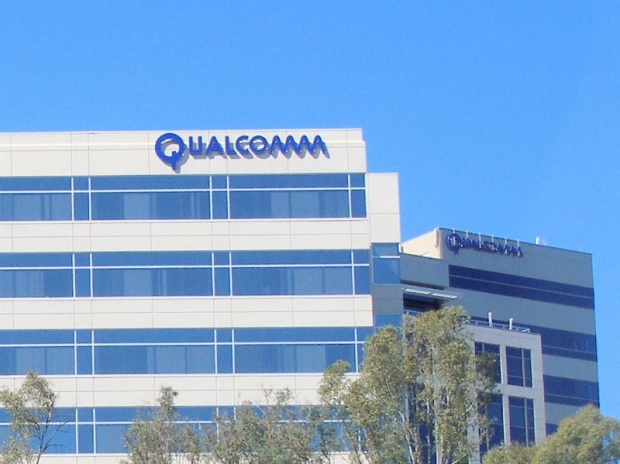Strong chipset sales and new license agreements in China are the reasons. Snapdragon did well and the return of Snapdragon 820 contributed healthy numbers.
Qualcomm revenue guidance for Q4 2016 was between $5.4 billion and $6.2 Billion and the company reached the highest number from the estimated, the $6.2 Billion revenue. Non-GAAP diluted EPS was $1.28, an increase of 41 per cent year-over-year. This is above $1.05 - $1.15 prior guidance range.
MSM chip shipments reached 211 million, an increase of four per cent year-over-year. This was above the midpoint of Qualcomm's prior guidance range of 195M – 215M chips.
Total reported device sales of $74.2 billion was an increase of 27 per cent year-over-year and it is above Qualcomm’s prior guidance range of $57.0B - $65.0B.
Qualcomm’s Q4 2016 is between June 25 and the September 25 and during this time the company sold between 401 and 405 million 3G/4G devices. This sales resulted with estimated average selling price of $181 to $187.
Qualcomm has a strong balance sheet. It has $32.4 billion in cash, cash equivalents and marketable securities. They could pay for almost 2/3 of NXP acquisition in cash, which shows how good they are doing.
Qualcomm also returned $1 billion, including $225 million through repurchases of 3.6 million shares of common stock and $782 million capital to stockholders. This is $0.53 per share, of cash dividends paid. On 6 October. 2016, Qualcomm announced a cash dividend of $0.53 per share payable on 16 December, 2016. Qualcomm stock holders will be laughing all the way to the bank.
If you look at the whole of financial 2016, Qualcomm had a revenue of $23.6 billion which is a seven per cent decrease year-over-year a Non-GAAP diluted EPS: $4.44, a decrease of five per cent year-over-year.
The MSM chip shipments of 842 million represent a decrease of 10 per cent year-over-year. This is not unexpected as Huawei is using its own chips for a huge volume of its phones and MediaTek is providing a lot of pressure in the mainstream and entry level market. Still, the total reported device sales of $267.4 billion is an increase of seven per cent year-over-year and it can be attributed to a higher end phone sales. Samsung Galaxy S7 is one of the success stories.
The planned return of capital to stockholders of $6.9 billion, including $3.9 billion through repurchases of 73.8 million shares of common stock and $3 billion, or $2.02 per share, of cash dividends is a nice award for the patience. Things didn’t look that good just a year ago when Snapdragon 810 over heated and a Samsung Galaxy S6 design was lost.
Qualcomm CEO Steven Mollenkop mentioned that Qualcomm CDMA Technologies delivered am improved operating margin target set last year and Qualcomm CDMA Technologies made additional progress on new license agreements in China.
NXP, an established global leader in industrial grade computing, security, sensors, RF, and networking should accelerate Qualcomm’s strategy in growth areas, products, customer relationships, and strong sales channels across automotive, IoT, security and networking.
We can play the "we told you so" card here, with NXP Qualcomm has a better fighting chance against its competitors in IoT and Automotive. Mollenkopf mentioned that the company is leading in 5G and its transition to a new standard from 2G/3G to 4G LTE and later 5G.
The Snapdragon X12 LTE modem, with carrier aggregation, 4x4 MIMO, and 256-QAM modulation can support 600 megabits per second on the downlink and T-Mobile USA launched the first 4x4 MIMO technology service with the Galaxy S7 and S7 Edge and plans to implement 256-QAM in the near future. SK Telekom in Korea and Telstra will be joining this club in the near future. Mollenkop mentioned that the company's Snapdragon X50 will be the world’s first 5G modem to ship inside of devices and will appear in the first half of 2018. Qualcomm is helping to accelerate the path to 5GNR, a global 5G standard that should get locked down next year.
In the premium tier, the Snapdragon 820 has 150 smartphone and tablet design wins, including important devices such as the Samsung Galaxy 7 and 7 Edge, the Xiaomi Mi 5, and the LG G5. The company announced and shipped the follow-on Snapdragon 821 that was recently under the bonnet of Google's Pixel.
A few weeks ago Qualcomm announced mid-tier segments with the Snapdragon 653, Snapdragon 626, and Snapdragon 427 all featuring the X9 300 Mbps download and 150 Mbps upload capable processors. First devices with Snapdragon 653 have already been announced.
Telstra in Australia has showcased the Snapdragon X16 modem desgin and the Netgar device powered by it can reach 1Gbps download and 150 Mbps upload.
In adjacent businesses, fiscal 2016 revenues were up more than 40 per cent year-over-year driven by growth in auto, networking and the addition of the CSR business. Qualcomm mentioned the leadership in connectivity and computing which includes 25 developer platforms that aim to speed up development of new systems. Mollenkop singled out the Snapdragon VR 820 virtual reality reference platform and a suite of connected camera solutions.
Mollenkop mentioned the Android Wear and Drone platform which is launching ahead of holiday season in USA and China. The LTE connectivity for IoT is doing well with 100 plus designs announced in June using the MDM 9x07 modems. There was a lot of traction among ecosystem players where the MDM9206 category MB1 modems featuring a purpose-built design for IoT, with lower power consumption and longer-range connectivity than previous LTE generations.
Qualcomm is broadening distribution of Snapdragon processors with two announced parts, the 410E and 600E using third-party distributors.
Its Automotive department gained a momentum with expanded design win momentum with global automakers across telematics, connectivity, and infotainment.
Qualcomm claims a leading place as a supplier of modems for telematics, benefiting from increased cellular attach rates in cars and the transition to 4G LTE vehicle solutions. Now it owns NXP, business there will be even greater.




